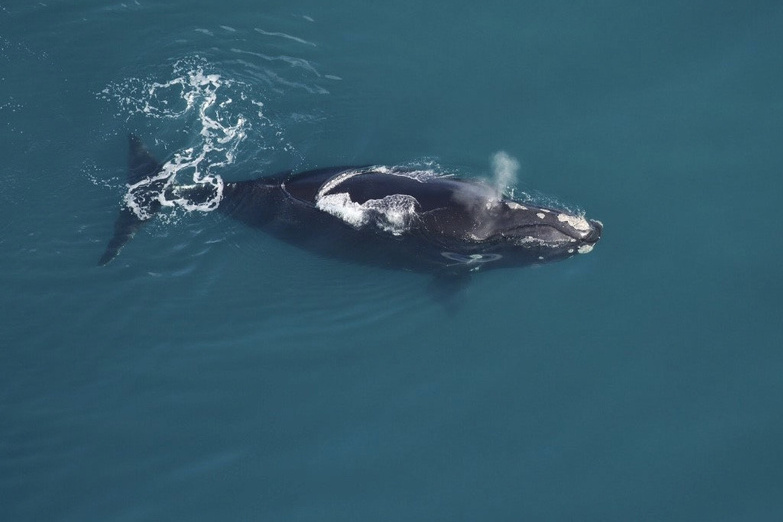(Fredericton) An international environmental organization is calling on the federal government to strengthen protections for endangered North Atlantic right whales and go beyond the 2023 measures it chooses to maintain this year.
Oceans Canada says birth rates are already below expectations for the season and at least three of the 19 North Atlantic right whale calves born so far are presumed dead this year.
The organization’s campaign director, Kim Elmslie, says observers should have recorded between 25 and 30 new calf births so far, since the total local population of 360 whales contains about 70 breeding females.
“It’s positive because we have a few more calves,” she said in an interview Friday, adding that only 12 new right whales were born last year.
“So it’s positive, but the death of the calves is really painful, because it’s the future of the species,” she added.
The right whale birthing season begins around the end of November and continues until February, Ms.me Elmslie.
Right whales typically give birth off the coasts of Georgia and Florida in the south and return to Canada to feed, she said.
“I’ve heard they’re called urban whales because they move pretty close to shore along the eastern United States […] and even into Canadian waters,” recounted Mme Elmslie.
“But along the way, they encounter all these different ships that are passing through the area. And millions of lines of fishing gear between the United States and Canada,” she says, adding that there are other, smaller problems like ocean noise.
“It’s very difficult for these animals. They are threatened throughout their range,” said M.me Elmslie.
Tangles, one of the main factors
The U.S.-based National Oceanic and Atmospheric Administration Fisheries, which tracks right whales, documents calf births dating back to 2007 on its website.
Data shows that births began to rebound after reaching a low of zero in 2018. They rose to seven the following year, 10 in 2020 and 20 in 2021, before falling again to 15 in 2022 and 12 the year last.
Right whales, it is said, reach sexual maturity at around 10 years of age and give birth to a calf after a year-long pregnancy.
While the birth interval is typically three years, right whales now have calves every six to 10 years, the report said.
“Biologists believe that additional stress from entanglements, injuries from ship strikes, and changes in prey availability due to climate change likely contribute to right whales giving birth less often, even when females survive the event,” we can read on the website.
While a “relatively” productive year for right whales would see at least 20 births, the report says human-caused mortality and serious injury rates mean at least 50 or more calves are needed per year for ” many years” to stop the decline of the species.
A study published earlier this month in the journal Biological Sciencesin which researchers discovered that entanglements in fishing gear are one of the main factors in the decline of the species, pointed out Mme Elmslie.
Between 1990 and 2017, the study indicates that these factors are responsible for the deaths of at least 41 animals. Authorities found 21 whales killed by ship strikes and another 20 from entanglements in fishing gear.
Cases of moderate to severe entanglements have increased over the past decade, the study found.
Focus on machines without rope
Fisheries and Oceans Canada announced earlier this week that it would make no changes to last year’s measures to protect right whales. The ministry said the same speed restrictions, gear bans and area closures triggered by signs of a whale will remain unchanged in 2024.
Mme Elmslie says she’s glad Ottawa left the same measures in place, because North Atlantic right whales need all the help they can get. However, she argues that more action is needed, including making ropeless fishing gear a priority.
She believes that the creation of loan centers for this type of equipment could facilitate an eventual transition, adding that fishermen could borrow the ropeless equipment for the season without having to pay for tools that are unfamiliar to them.
“We have, thanks to technology, the rope-free solution, and this will help not only right whales, but all the baleen whales found in the Gulf of St. Lawrence,” she said.
